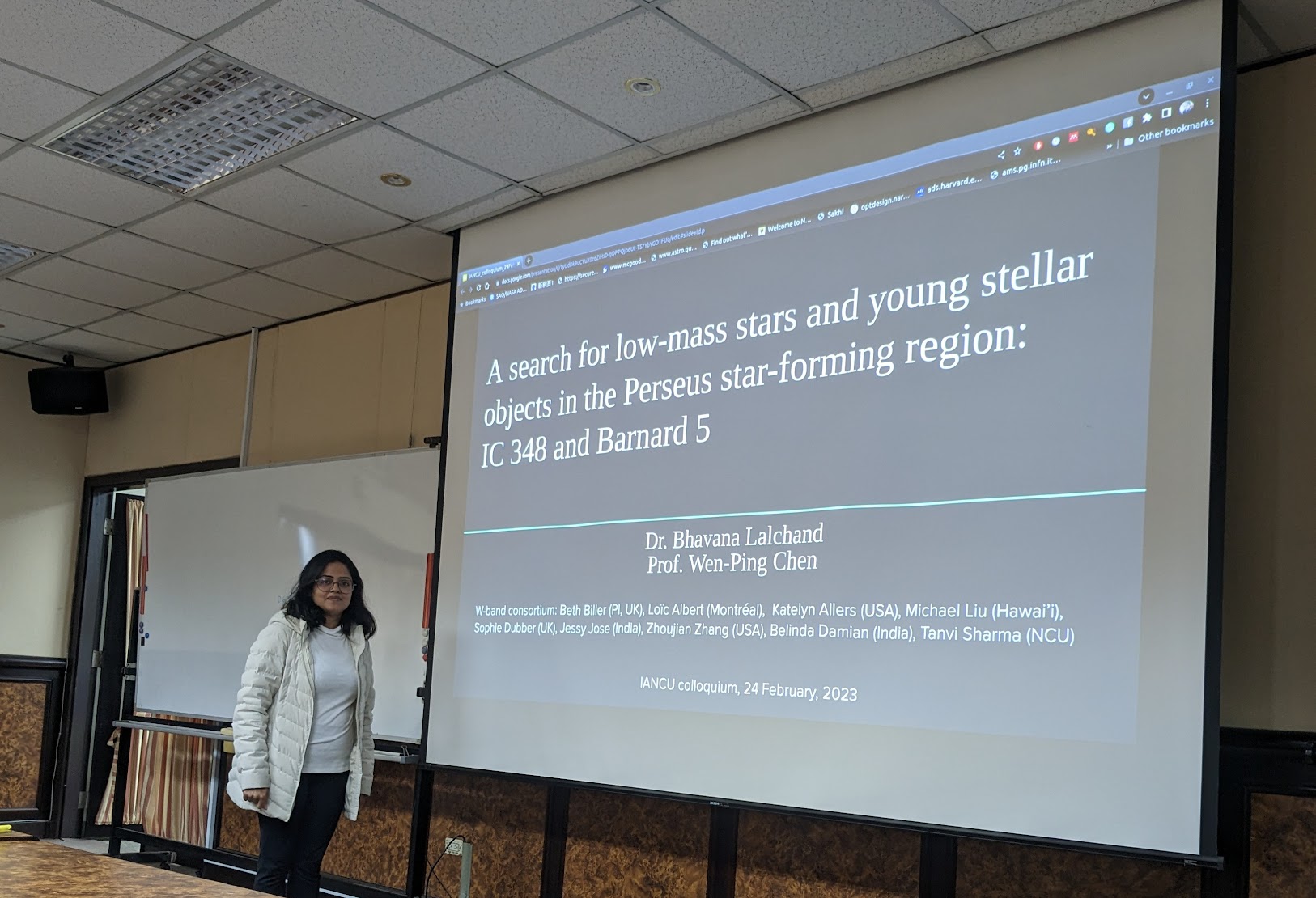Dr. Bhavana Lalchand (NCUIA)

"A search for low-mass stars and young stellar objects in the
Perseus star-forming region: IC 348 and Barnard 5"
時間/地點: 2023-02-24 14:00 [S4-1013]
摘要:
Brown dwarfs fill the gap between low-mass stars and giant planets
with a typical mass <0.08 M⊙ formed either like planets in a disk
around a star or like stars by gravitational contraction of a cloud of
gas and dust. Brown dwarfs are significantly brighter and warmer at
very young ages, star-forming regions (or young clusters) are the best
site for finding in large numbers. They are also vital tracers of the
low mass end of the star formation and key analogues to exoplanets
around stars. The complete census of a star-forming cloud, to masses
well below the deuterium burning limit, will also constrain the very
low-mass end of the initial mass function, a key test of theories for
star and brown dwarf formation.
IC348 and B5 (LDN-1471) are relatively young clusters located at the
eastern edge of the Perseus cloud complex at a distance of 300 pc and
350pc respectively. IC348 (~3 Myr old) comprises 478 cluster members
and the most massive star is a B5 star. The southwest ridge of the
cluster (~10 arcmin) is currently undergoing star-formation with many
embedded objects, and outflows. Barnard 5 is also known to have
ongoing star formation, with a group of protostars, fragmenting cloud
filaments, and Herbig-Haro objects; however, its low-mass membership
is much unexploited. Therefore a thorough study of young stars and
brown dwarfs in young star-forming regions will help us understand the
Initial Mass Functions, disk fraction etc, and provides a good amount
of sample to study the formation of brown dwarfs and low-mass stars.
We have developed a technique to robustly identify young low mass
stars in the active star-forming region of IC 348 and Barnard 5 via
the 1.45 μm H2O absorption band seen in the spectra of M-L-T-Y type
objects by combining 1.45 μm imaging with J and H photometry to
estimate spectral types independent of reddening. We select our
candidates based on the reddening-insensitive index (Q) by combining
J, H and W-band photometry. Via this technique, we have identified two
new brown dwarfs in IC348 and two late-M dwarf candidate members of
the largely unexplored B5 globule in the cloud complex. We also use
complementary data from Gaia EDR3, WISE, 2MASS, and PanSTARRS to look
for possible members in Barnard 5.
回上一頁
